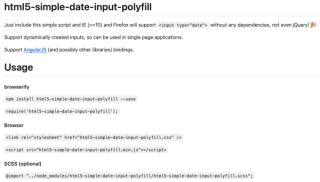Common methods to improve coding skillscreated at Oct 18, 2025 180 180 What I learned is that the most important ways to improve coding skills are language-independent.Focus on building a strong foundation in fundamental concepts, |
What is the role of README.md at GitHub/GitLab Repository?updated at Sep 23, 2024 6,955 6,955 README.md files are like the welcoming doormats of GitHub and GitLab repositories.They sit at the root of projects, |

